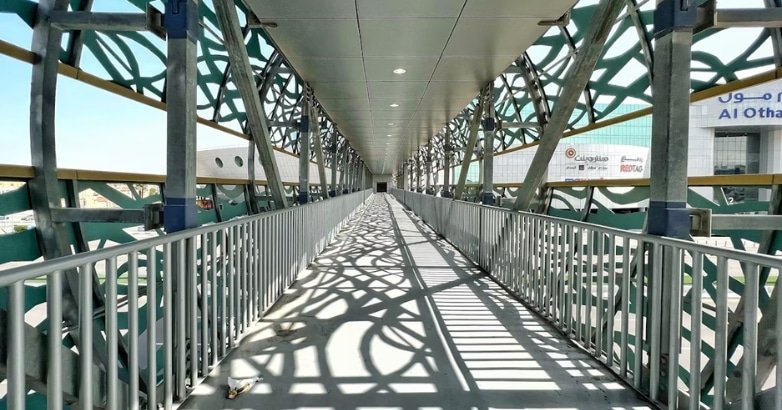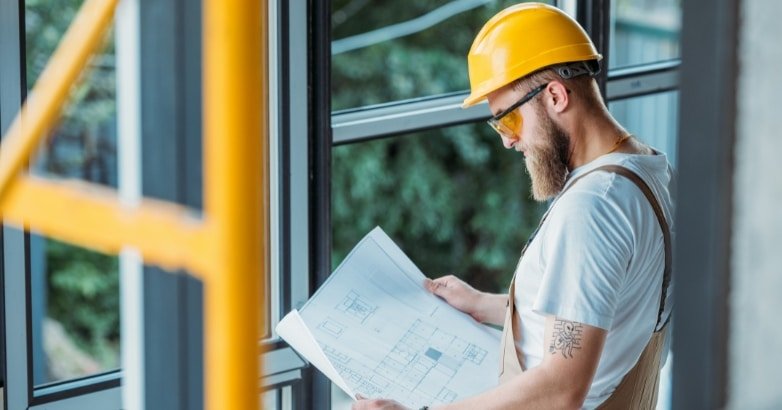When it comes to upgrading your space, knowing the difference between interior vs exterior railings is essential. Here’s what your business needs to know to make a smart, lasting choice.
Interior railings are made for indoor use, think staircases, lobbies, and lofts, with a focus on aesthetics and minimal upkeep. Exterior railings, on the other hand, are built tough to withstand weather and boost curb appeal. For businesses, understanding the use case, materials, and code requirements is key. The right railing not only improves safety but also adds a professional look that makes a lasting impression.
Still unsure which type of railing is best for your property? Read on as we break down the pros, cons, and materials to help you make the best business decision.
What Are Interior Railings?
Interior railings are structural and decorative features installed inside a building, primarily for safety and style. Commonly found along staircases, balconies, lofts, and mezzanines, these railings help prevent falls and guide foot traffic. Businesses often use interior railings not just for protection, but to enhance the overall design of a space.
Materials like glass, wood, wrought iron, and stainless steel are popular for their clean aesthetics and ease of maintenance. Interior railings are less exposed to harsh environmental elements, so they typically have a longer aesthetic lifespan with minimal upkeep.
For offices, restaurants, or retail spaces, choosing the right railing from the interior vs exterior railings options can create a seamless, inviting, and professional atmosphere that aligns with your brand’s look and feel.
What Are Exterior Railings?
Exterior railings are installed outside buildings to provide safety, support, and aesthetic appeal in outdoor spaces such as entryways, porches, staircases, decks, ramps, and balconies. These railings are designed to withstand harsh weather conditions, including rain, snow, UV rays, and temperature changes.
Materials like powder-coated aluminum, vinyl, treated wood, and stainless steel are commonly used for their durability and low maintenance. Beyond safety, exterior railings enhance curb appeal and create a welcoming first impression for customers or visitors.
For businesses, especially those with outdoor seating or raised entry points, exterior railings are not just functional; they also communicate professionalism and attention to detail, making them a smart investment for both safety and branding.
Interior vs Exterior Railings: The Key Differences
Understanding the differences between interior and exterior railings is crucial when designing or upgrading your business space. While both serve the purpose of safety and support, they differ significantly in material, design, durability, and exposure to elements.
Here’s a quick comparison:
| Feature | Interior Railings | Exterior Railings |
| Location | Indoors (stairs, balconies, lofts) | Outdoors (porches, decks, entryways) |
| Material | Wood, glass, wrought iron, stainless steel | Aluminum, vinyl, treated wood, galvanized steel |
| Durability | Moderate; protected from the weather | High; must resist sun, rain, and temperature changes |
| Aesthetic Focus | Enhances indoor decor and style | Boosts curb appeal and safety |
| Maintenance Needs | Minimal; occasional cleaning | Seasonal maintenance, rust-proofing, and repainting |
Choosing the right railing depends on location, function, and exposure. Interior railings prioritize design and cohesion, while exterior ones focus on longevity and outdoor safety.
Best Materials for Railings: Inside and Out
Selecting the right materials for your railings depends on whether they’ll be installed indoors or outdoors. Each environment has unique demands, from design flexibility to weather resistance.
Top Materials for Interior Railings:
- Glass: Offers a sleek, modern look; ideal for upscale office or retail interiors.
- Wood: Warm and classic; great for boutique or traditional spaces.
- Wrought Iron: Elegant and durable; suits historic or luxury interiors.
- Stainless Steel: Clean and contemporary with high durability.
Top Materials for Exterior Railings:
- Aluminum: Lightweight, rust-resistant, and easy to maintain.
- Vinyl: Affordable, low-maintenance, and weather-resistant.
- Pressure-Treated Wood: Budget-friendly with proper sealing.
- Galvanized Steel: Strong and built for harsh environments.
Interior railings prioritize aesthetic cohesion, while exterior options focus on long-term performance. Choosing the right material ensures your railing complements your business space while standing up to wear and tear.
Important Considerations for Business Owners
When deciding between interior vs exterior railings for your business, several key factors should guide your decision. First, consider local building codes and safety regulations; your railing must meet height, spacing, and load requirements to ensure compliance and prevent liability. Next, assess the location and usage: high-traffic areas or outdoor spaces demand more durable materials.
Maintenance is another vital factor; exterior railings may require seasonal upkeep, while interior options often need minimal care. Lastly, think about aesthetics and brand alignment. Your railing design should complement your business’s look and feel, leaving a positive impression on customers. Prioritizing function, safety, and style ensures a smart, long-lasting investment.
Why Professional Installation Matters
Professional installation ensures that your railings are not only secure but also compliant with local building codes. Improperly installed railings can pose serious safety risks, lead to failed inspections, and even result in legal liabilities. Experts bring the right tools, knowledge, and experience to handle both interior and exterior installations efficiently.
They also offer material guidance, custom fitting, and long-term durability, something DIY installations often lack. For businesses, professional work reflects quality and attention to detail, enhancing your property’s image and functionality.
Ready to upgrade your space with expertly installed railings? Contact us today!
Conclusion
Choosing between interior and exterior railings is more than just a design decision—it’s a strategic choice that impacts safety, durability, and the overall impression of your business. Interior railings enhance your space with style and support, while exterior railings provide critical protection against the elements and boost curb appeal.
By understanding the differences between interior vs exterior railings, selecting the right materials, and relying on professional installation, you ensure that your investment is both functional and visually aligned with your brand. Whether you’re renovating or building new, the right railing system is a smart way to add value, safety, and professionalism to any commercial space.
Looking to get started? Reach out to us today for expert advice, high-quality materials, and professional installation services tailored to your business needs. Let’s build something strong, stylish, and built to last.






